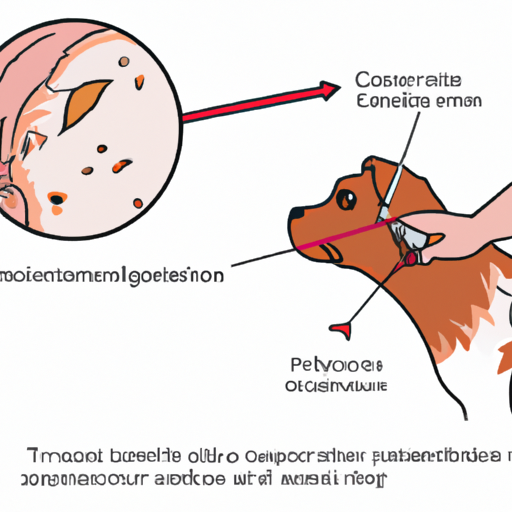Understanding Seborrhea
Seborrhea, often referred to as “doggy dandruff”, is a skin condition that affects your four-legged friends. It causes flaky skin, itching, and a greasy coat. The condition can be quite uncomfortable for dogs and distressing for you, the caregiver. Seborrhea can either be primary or secondary. Primary seborrhea is genetic and usually starts showing symptoms when your dog is young. Secondary seborrhea, on the other hand, develops as a result of other medical conditions such as allergies or hormonal imbalances.
Symptoms of Seborrhea
Your dog can’t tell you what’s wrong. It’s up to you to read the signs and take action. Here are some symptoms to watch out for:
- Flaky skin (either dry or oily)
- Redness or inflammation
- Itching
- Bad smell
- Greasy coat
Note: The symptoms might not be obvious at first, but you’ll start noticing them as the condition progresses.
Causes of Seborrhea
If you’re wondering why your dog is suffering from seborrhea, consider these possibilities:
- Genetics: Some breeds are more prone to the condition than others.
- Allergies: An allergic reaction can trigger seborrhea.
- Parasites: Fleas and ticks can cause skin irritation leading to seborrhea.
- Nutritional deficiencies: A diet lacking in certain nutrients can lead to skin issues.
Treating Seborrhea in Dogs
When it comes to treatment, it’s crucial to understand that seborrhea is usually a symptom of an underlying condition. Therefore, treating the root cause is essential. Here’s what you can do:
- Regular bathing: Use a medicated shampoo designed for dogs with seborrhea.
- Dietary adjustments: Make sure your dog’s diet is balanced and nutritious.
- Medications: In severe cases, your vet may prescribe topical creams or oral medications.
| Treatment Type | Description |
|---|---|
| Regular bathing | Helps to remove excess oil and skin flakes |
| Dietary adjustments | Ensures your dog gets necessary nutrients |
| Medications | Used in severe cases to manage symptoms |
Preventing Seborrhea in Dogs
Prevention is always better than cure. Here are some steps you can take to prevent seborrhea:
- Regular grooming: This helps to keep the skin and coat healthy.
- Healthy diet: Provide a balanced diet to ensure your dog gets all the necessary nutrients.
- Regular vet check-ups: This allows for early detection and treatment of any underlying conditions that may cause seborrhea.
Frequently Asked Questions
Q1: Can seborrhea in dogs be cured?
It depends on the cause. If it’s secondary seborrhea caused by an underlying condition, treating that condition can eliminate seborrhea.
Q2: Is seborrhea in dogs contagious to humans?
No, it’s not contagious to humans.
Q3: How often should I bathe my dog with seborrhea?
Your vet will give you a bathing schedule depending on the severity of the condition.
Remember, as a caregiver, your dog relies on you for its well-being. Keep an eye out for signs of seborrhea and act promptly if you notice anything unusual.



